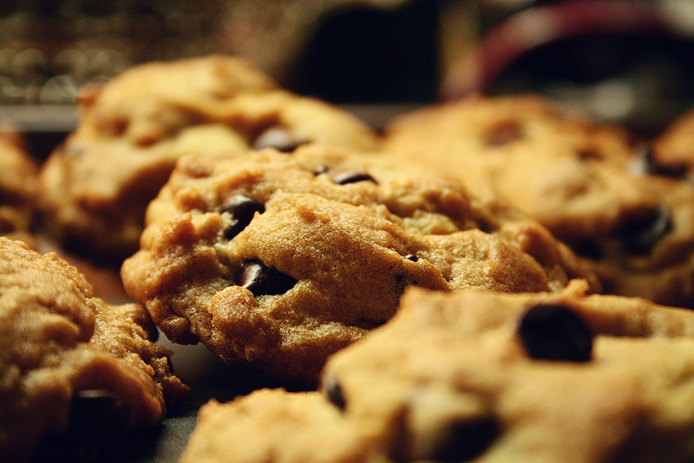Cookie Test Yields Secrets of Self-Control Years Later

Imagine hundreds of 4-year-olds each alone in a room with a delectable cookie or a scrumptious marshmallow. Before they reach for the enticing confection, an experimenter offers them a choice: they can have one right away, or get two if they just wait. Can they resist sweet temptation for 15 agonizing minutes, or do they surrender to instant gratification?
This simple test of willpower, and follow-up studies for years afterward, has uncovered a host of insights on how self-control, or the lack thereof, might influence lives.
Now, decades after the marshmallow experiment started, by analyzing the first batch of these children, long since grown up, scientists have pinpointed brain circuits underlying willpower. Such research could help discover new ways to improve self-control, potentially helping to fight addiction and obesity, scientists suggested.
Want a cookie?
More than 600 children took part in the marshmallow experiment nearly 40 years ago, conceived of by psychologist Walter Mischel of Stanford University and his colleagues.
"Sometimes experimenters had not even finished talking about the experiment when the kids already ate the marshmallow or cookie," said cognitive neuroscientist B.J. Casey at Weill Cornell Medical College, who has taken part in follow-up studies on this work. "Other 4-year-olds were able to wait by sitting on their hands and turning away, or creating imaginary friends to distract them."
Since Mischel's daughters attended nursery school with many of these children in the study, he began noticing that whether or not the kids delayed gratification appeared linked with many other factors in their lives. Kids who succumbed quickly to temptation often had lower SAT scores, a higher body-mass index and a slightly increased risk of substance abuse later on. [10 Easy Paths to Self Destruction]
Get the world’s most fascinating discoveries delivered straight to your inbox.
Casey refers to those who quickly gave in as low-delayers and those who can delay gratification high-delayers.
"Now, you're not doomed to a bad life if you're in the low-delay group — those results are the average across the whole group, and not true for everyone within," Casey stressed. "Personally, I think we need both low-delayers and high-delayers. High-delayers are more methodical, while low-delayers are more drawn to interesting new or alluring things. If you need explorers, low-delayers might be where to look."
Willpower on the brain
Now, with the advent of advanced brain-imaging techniques, researchers wanted to see if they could learn more about the roots of willpower in the brain from the original experimental group, now middle-aged. However, first they had to find out if these differences were still present. Since marshmallows and cookies are much less enticing to most adults than 4-year-olds, the scientists devised a new test of impulse control.
Casey, Mischel and their colleagueschose nearly 60 volunteers who scored in the extremes from the original group — either they gave in quickly or held out the entire time. The researchers had them perform a task where they where shown fearful or happy facial expressions and had to push the button when they saw one but not the other.
The happy faces essentially served as marshmallows — people generally prefer happy faces to others, and are more apt to push buttons for them even when they are not supposed to. "We found the same individuals who had trouble delaying gratification 40 years ago still had trouble doing it now," Casey told LiveScience. "It really blew me away that we saw a trait that seemed so stable — they couldn't stop themselves at 4, and still can't stop themselves at more than 40."
By scanning the brains of these volunteers during the task with functional magnetic resonance imaging (fMRI), the researchers found "this deep structure in the brain, the ventral striatum, was involved, one associated with how we process rewards and has been linked with addiction," Casey said. "We think it's sensitive to cues a person might think are essentially salient to themselves, and so novelty seekers get pulled in."
Now that scientists have the technology to understand this trait and its possible origins in the brain, this finding "is just the first step of more to come," Casey said.
For instance, other research of Mischel and his colleagues have shown tactics 4-year-olds could employ to help resist temptation, "such as thinking of marshmallows as clouds or cookies as pictures," Casey said. "We could see if training how people pay attention to things helps them regulate their behavior, which could help with the obesity epidemic or with addiction research."
Mischel and Casey, with Yuichi Shoda and their colleagues, detailed their findings online today (Aug. 29) in the Proceedings of the National Academy of Sciences.
Follow LiveScience for the latest in science news and discoveries on Twitter @livescience and on Facebook.



